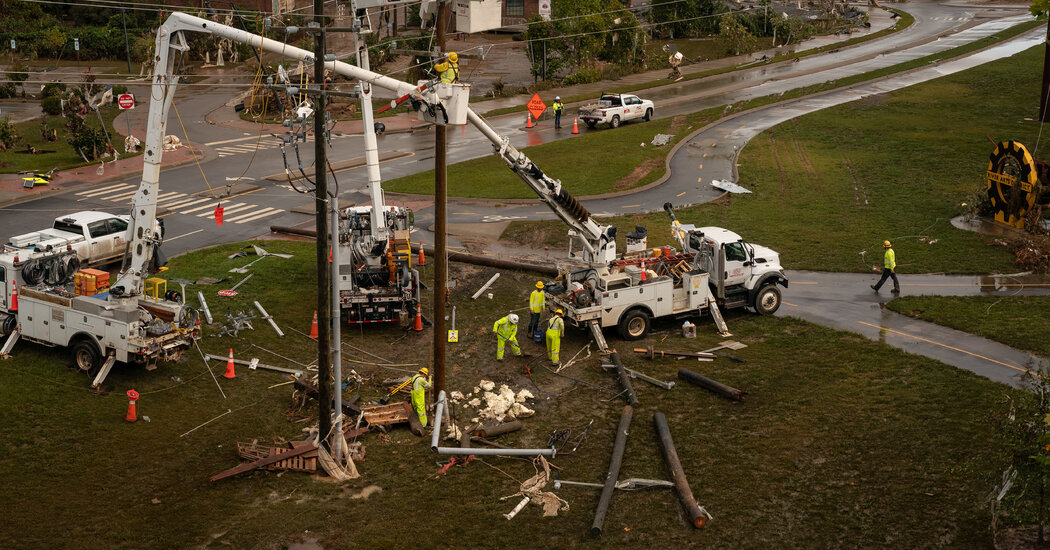Damage went beyond downed power lines. Hundreds of substations went out after the storm. Getting them back online is difficult.
Hurricane Helene didn’t just knock down power lines across the Southeast — it also flooded many electrical substations, which can take weeks or months to repair if they are severely damaged.
Substations are critical pieces of infrastructure that connect high-voltage transmission lines with smaller distribution lines that feed power to communities. As crews race to restore electricity to hundreds of thousands of homes across North and South Carolina, their task is complicated by the extensive destruction caused by the storm and the inaccessibility of some of the hardest-hit regions.
Duke Energy, the largest electric utility in the Carolinas, said that about 370 substations in its territory were knocked out of service by Helene. The “vast majority” of those outages were caused by damaged power lines and many of those substations have already been restored, said Jennifer Garber, a Duke spokeswoman.
But an unknown number of substations may have faced more extensive damage from the floods. If they cannot be repaired quickly, Duke is aiming to bring in mobile substations to restore service as soon as it is safe to do so, though that could prove difficult as many roads remain destroyed or blocked by debris.
“The devastation of Hurricane Helene is unlike anything we have seen before in the Carolinas,” Ms. Garber said.
As of Tuesday morning, about 346,000 homes and businesses in North Carolina and 446,000 customers in South Carolina were without power. In a statement, Duke said that it aimed to restore electricity to most customers by Friday night, though it cautioned that the process “may take longer in areas that continue to be inaccessible, dependent on infrastructure that has been destroyed or are unable to receive service.”
